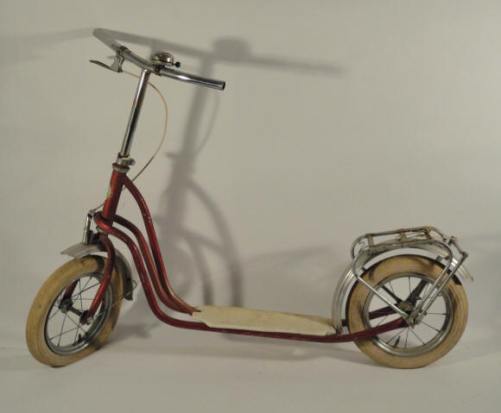Vienna, 29 June 2017
A few days ago, just as my wife and I were setting out from the apartment, it started to rain. It was my wife who had decreed that it wouldn’t rain, but it was I who went back to get the umbrellas. As readers can imagine, I was a little grumpy as I ascended the stairs, glaring at the individual steps. Perhaps it was my acute attention of the steps, perhaps it was the light; whatever it was, I suddenly noticed in the sixth step from last, which had been worn smooth by countless feet treading on it, something which I had never noticed before on my walks up and down those stairs: a fossil.

At first sight it looked like a leaf, but I now think it could be a coral of some sort. I walked up and down all six flights of stairs in our building looking intently at each step,

and I now see what I had never really noticed before, that the limestone used for them is made up of a mass of shells and other marine remains, fallen randomly on top of each other and then squeezed tight by the monstrous weight of later rocks above them.
As we discovered when we bought the apartment and picked through the Land Register, our building was constructed at the turn of the century. It was, and has remained, a modest building – no Belvedere Palace for us

just a modest lower middle-class building, one of many outside Vienna’s swank 1st District.

Consequently, even at a time when long-distance travel had been made a thousand times easier by the booming rail system and nascent road system, I would imagine that the stone for our steps came from a local quarry. Which is more than possible, there being quite a number of old limestone quarries around Vienna, a number of which – I have been breathlessly informed by an Austrian fossil-hunter website – are good sources of marine fossils.
An Austrian map of the country’s geology informs me – if my rudimentary German is correct – that the rock formations in question are Late Tertiary.

Specifically, according to a mind-numbing report prepared for the 26th International Geological Congress which I leafed through electronically, they belong to the Neogene beds in the Vienna basin; these were laid down some some 10-15 million years ago, between the Upper Eggenburgian and Lower Badenian stages of the Middle Miocene epoch, as a result of at least two marine incursions into the Vienna basin.
Setting aside all the arcane – and, frankly, incomprehensible – scientific mumbo-jumbo with which this report is filled, we can happily conclude that the jumbled marine fossils locked forever more into the steps of our building’s stairway are the result of the area around Vienna twice being a sea. It must have been a nice warm sea too, since corals flourished in its waters. In fact, this map of mid-Miocene Europe shows that much of Central Europe was under water during this Epoch, this being the far western end of the wonderfully-named Tethys Sea.

In cases like these, I am always taken by a sense of wonder. Here I am, living on the edges of a rich agricultural plain 350 kilometers from the nearest sea.

Yet once upon a time there was sea all around me, probably quite like the sea which my wife and I snorkeled over a year ago in Thailand, with coral outcrops, starfish and sea urchins clinging to their rocks, crabs scuttling along the sea floor, fish flashing in and out of the coral, and from time to time the passing shadow of a shark.

That same sense of wonder came over me many years ago, when we visited Arizona’s Petrified Forest National Park. The park sits in the middle of a harsh, dry, desert region.

Yet all around us lay the petrified remains of a once mighty forest.


Artists imagine that these 200 million year-old forests looked something like this.

All that teaming life in this now almost dead environment …
It was more with a sense of fascinated horror than awe that I first gazed on the “fossils” (mummies is perhaps the better term) of people and animals dug up at Pompeii.



They were overtaken, submerged, in the 1000°C-hot pyroclastic flow that swept down the sides of Mt. Vesuvius and howled through the city at 700 km/hr.

What a terrible, terrible death! But perhaps it was a mercifully quick death, with them being flash-cooked, basically.
Hmm, I didn’t want to finish on this rather depressing note. But hey, that’s life! In the meantime, I need to escogitate a plan to persuade my wife join me on a visit to Vienna’s Natural Science Museum (sheathed in a very nice stone, I should add) so that I can study the area’s geology better.

_______________
Our building’s steps: our photos
Belvedere Palace: http://www.austriawanderer.com/the-belvedere-palace-in-vienna/
Our apartment building: our photo
Geological map of Europe: http://www.gifex.com/detail-en/2011-06-29-13972/Geological-map-of-Austria.html
Miocene Europe: http://www.dandebat.dk/eng-klima4.htm
Vienna plain: http://www.donau.com/de/roemerland-carnuntum-marchfeld/detail/marktgemeinde-goetzendorf-an-der-leitha/c53b2a6b0c75fed4d809b78b888830d9/
Tropical sea: https://fineartamerica.com/featured/coral-reef-in-thailand-louise-murray-and-photo-researchers.html
Petrified Forest NP: http://kids.nationalgeographic.com/explore/nature/petrifiedforest/#petrified-forest-hills.jpg
Petrified tree-1: http://www.alamy.com/stock-photo/petrified-forest-national-park-arizona.html
Petrified tree-2: http://www.van-tramp.com/wp/petrified-forest-national-park-revisit/
Forest 100 million years ago: https://jerry-coleby-williams.net/2015/02/15/bunya-prehistoric-plant-ancient-australian-food-tradition/araucaroid-forest-ca-100-million-years-ago/
Pompeii mummies-1: https://www.google.co.uk/amp/s/www.pinterest.com/amp/pin/535224736949021987/
Pompeii mummies-2: http://hesed.info/blog/pompeii-lava-statues.abp
Pompeii mummies-3: https://forums.arrowheads.com/forum/general-discussion-gc5/fossils-paleontology-old-bones-gc30/25828-reposting-pam-s-odd-rock-fossil-2nd-opinion
Pompeii and Mt Vesuvius: https://it.pinterest.com/agcinnamongirl/pompeii-italy/
Natural History Museum, Vienna: https://ictca2017.conf.tuwien.ac.at/index.php/natural-history-museum-vienna
























